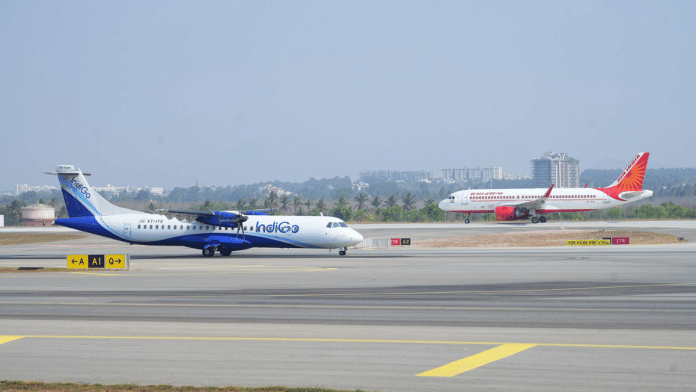New Delhi: An inspection of major airports, including Mumbai and Delhi, by the Directorate General of Civil Aviation (DGCA) has found multiple cases of recurring aircraft defects, indicating ineffective monitoring, inadequate rectification, and non-compliance with maintenance work orders, a DGCA statement has said.
According to the statement issued Tuesday, in one of the airports, the DGCA found the line running along the center of the runway had faded, the rapid exit taxiway and the green center light were no longer unidirectional, as required, and a domestic flight of a scheduled carrier held up due to its worn-out wheels and released only after its required rectification.
Two teams led by the joint director general of the DGCA started a survey of airports at night and in the early morning hours following a 19 June order by the aviation watchdog to ensure safety measures across the aviation ecosystem.
The DGCA circular came days after the London-bound Air India flight crash in Ahmedabad on 12 June. The crash left at least 275 dead. Of the 242 on board the aircraft, 241 died.
According to the DGCA, multiple critical areas, including flight operations, airworthiness, ramp safety, air traffic control (ATC), communication, navigation & surveillance (CNS) systems, as well as pre-flight medical evaluations, were inspected.
The DGCA also monitored ground activities and aircraft movement to check compliance with regulations. The inspections found ground handling equipment, such as baggage trollies, lying unserviceable, and line maintenance stores and tool control procedures going unfollowed.
The DGCA also found unserviceable thrust reverser systems and unlocked flap or slat levers—essential to aircraft control mechanisms—during aircraft maintenance work.
Moreover, the DGCA found that during maintenance, the aircraft maintenance engineers often ignored safety precautions as prescribed in the maintenance manual for snag rectification.
The DGCA also found technical logbooks that did not record all the defect reports generated by an aircraft system—as required—as well as life vests not secured under their designated seats and damage in the corrosion-resistant tapes on the lower blade of the right-hand winglet.
Additionally, in many places, the DGCA found obstruction limitation data, which restricts the height and placement of obstacles such as buildings, trees, or other structures in the vicinity of an airport, had not been updated in the last three years. Maintaining obstruction limitation data—according to the DGCA regulations—is essential for airspace safety. Despite many new constructions in the area around the aerodrome, no surveys had also taken place.
Checks also found simulators that did not match aircraft configurations and older software versions that operators had failed to update.
Communicating these findings to operators, the aviation watchdog has directed them to take corrective measures in seven days.
(Edited by Madhurita Goswami)
Also Read: Chinese embassy takes to social media to press India to resume direct passenger flights






